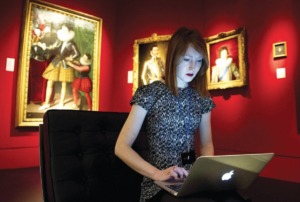
Barely a month goes by without the launch of an online initiative that aims to disrupt the art market and bring the “Uber and Airbnb effect” to art transactions. But witness the crowds pacing the aisles at a big-league art fair, or spilling out of the salesrooms during the evening auctions, and the impact of the internet on this object-and-people-business seems minimal. October saw the official launch of two online art sales platforms: ArtAndOnly, for works valued at typically up to $500,000 and, at the other end of the scale, Arteby’s, an online auction and peer-to-peer marketplace, which has a current minimum lot value of £100.
Meanwhile, ahead of its inaugural New York edition, in late October, the Tefaf art fair announced the launch of a new Digital Excellence Program, supported by its new sponsor, Invaluable, to help the fair’s dealers reach new audiences online. Invariably, most new online businesses cite data from the latest Hiscox Online Art Trade Report, which found that this market grew 24% to $3.3bn in 2015 and predicted it to reach $9.6bn by 2020.
All this rather glosses over the fact that the online market seems to have hit a bit of a brick wall. Hiscox finds there is “still resistance”, especially from buyers who are 35 and younger. The report says that Generation Y (people born in the 1980s and 90s) is put off by not being able to physically inspect a work and that there is not enough information about quality available online. While this can of course also apply to physical businesses, perception counts for a lot in the art market.
